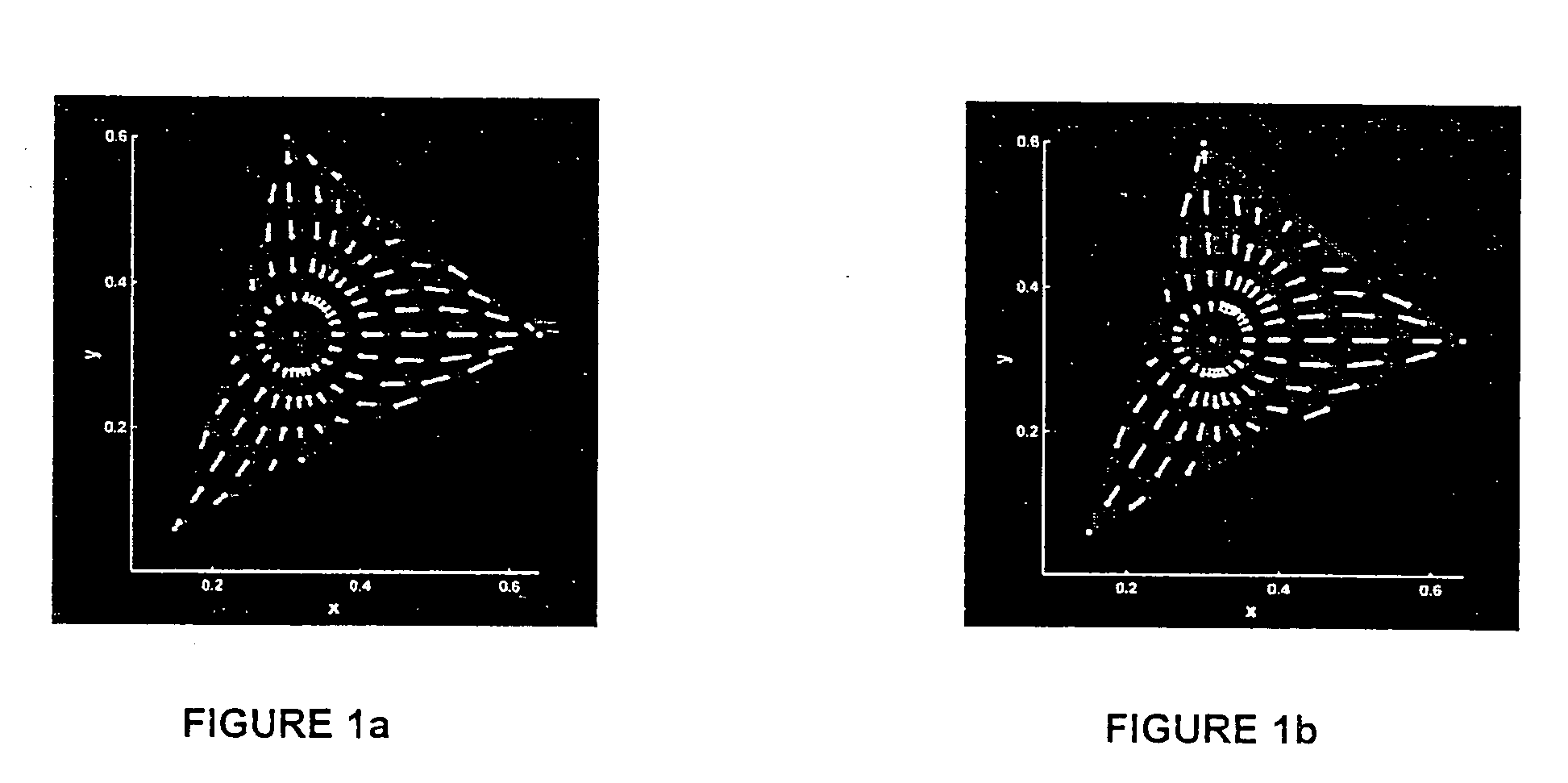Color vision deficiency screening test resistant to display calibration errors
a color vision deficiency and display technology, applied in the field of vision testing, can solve the problem that color deficient observers would still not be able to identify the target, and achieve the effect of avoiding color vision deficiency testing
- Summary
- Abstract
- Description
- Claims
- Application Information
AI Technical Summary
Benefits of technology
Problems solved by technology
Method used
Image
Examples
Embodiment Construction
[0020] There are a number of ways in which colors displayed on a cathode ray tube (CRT) are likely to deviate from their desired values. Colors shift in ways characteristic of the physical properties of CRT displays, and it is the systematic nature of these color errors that permit incorporation of safeguards in the color screening test proposed here. To our knowledge, no currently available color test explicitly addresses these possible sources of false positive, or worse, false negative, diagnoses. A brief outline regarding some of the most important factors affecting color rendition is now provided.
[0021] CRT monitors exhibit characteristic color shifts in the colors they display when they are not calibrated correctly. However, since for a given monitor the chromaticities of the primary colors do not vary significantly with the calibration state, all color shifts must occur within the region of the color space delimited by the primary chromaticities. Thus, if sets of colors with...
PUM
 Login to View More
Login to View More Abstract
Description
Claims
Application Information
 Login to View More
Login to View More - R&D
- Intellectual Property
- Life Sciences
- Materials
- Tech Scout
- Unparalleled Data Quality
- Higher Quality Content
- 60% Fewer Hallucinations
Browse by: Latest US Patents, China's latest patents, Technical Efficacy Thesaurus, Application Domain, Technology Topic, Popular Technical Reports.
© 2025 PatSnap. All rights reserved.Legal|Privacy policy|Modern Slavery Act Transparency Statement|Sitemap|About US| Contact US: help@patsnap.com



